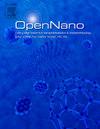Are Bentong ginger (Zingiber officinale) biosynthesized silver nanoparticles safe and effective? An optimization, characterization, and toxicity evaluation study
Q2 Pharmacology, Toxicology and Pharmaceutics
引用次数: 0
Abstract
The biosynthesis of silver nanoparticles from ginger extract is particularly interesting due to the bioactive compounds present in ginger, which have antioxidant, antimicrobial, and anti-inflammatory properties. The study aims to optimize, characterize, and evaluate the toxicity value of the biosynthesized silver nanoparticles using Bentong ginger (Zingiber officinale) rhizome extract and commercialized ginger powder extract as reducing and capping agents. The synthesis was optimized regarding pH, silver nitrate concentration, and incubation time for better yield and stability. Additionally, biosynthesized silver nanoparticles were characterized using UV–vis spectrophotometer, X-ray diffraction, Fourier-transform Infrared, and Transmission Electron Microscope analysis. Cytotoxicity test was done using brine shrimp lethality test to determine toxicity value. The result for both Bentong ginger rhizome extract and commercialized ginger powder extract indicated that the maximum absorption of biosynthesized silver nanoparticles was 450 nm, with the most optimum pH of 11, 1 mM of silver nitrate concentration, and incubation time of 24 h. The nanoparticles were almost spherical, with an average particle size of 15.08 ± 6 nm. The analysis confirms the presence of phytochemicals in the ginger extract that aids in reducing silver ions into silver nanoparticles. Brine shrimp lethality assay showed the LC50 for AgNPs was medium toxic at 838.31 µg/mL. Although silver nanoparticles possess antimicrobial ability, the potential toxicity to human health and environmental concerns must be considered before deploying into food industries. This is the first report utilizing Bentong ginger in silver nanoparticle synthesis.

本通姜(Zingiber officinale)生物合成银纳米颗粒安全有效吗?优化、表征和毒性评价研究
由于生姜中含有抗氧化、抗菌和抗炎的生物活性化合物,因此从生姜提取物中合成纳米银的生物合成特别有趣。本研究旨在优化、表征和评价以本通姜(Zingiber officinale)根茎提取物和市售姜粉提取物为还原剂和封盖剂的生物合成纳米银的毒性价值。对合成工艺进行了pH、硝酸银浓度、孵育时间等方面的优化,以获得更好的收率和稳定性。此外,利用紫外-可见分光光度计、x射线衍射、傅里叶变换红外和透射电镜分析对生物合成的纳米银进行了表征。采用卤虾致死试验进行细胞毒性试验,确定毒性值。本通姜提取物和市产姜粉提取物的实验结果表明,生物合成银纳米颗粒的最大吸收量为450 nm,最佳pH为11.1 mM硝酸银浓度,培养时间为24 h,纳米颗粒呈球状,平均粒径为15.08±6 nm。分析证实,生姜提取物中存在植物化学物质,有助于将银离子还原成银纳米粒子。盐水对虾致死试验表明,AgNPs的LC50为中毒性,为838.31µg/mL。虽然银纳米颗粒具有抗菌能力,但在将其应用于食品工业之前,必须考虑其对人类健康和环境的潜在毒性。本文首次报道利用本通姜合成纳米银颗粒。
本文章由计算机程序翻译,如有差异,请以英文原文为准。
求助全文
约1分钟内获得全文
求助全文
来源期刊

OpenNano
Medicine-Pharmacology (medical)
CiteScore
4.10
自引率
0.00%
发文量
63
审稿时长
50 days
期刊介绍:
OpenNano is an internationally peer-reviewed and open access journal publishing high-quality review articles and original research papers on the burgeoning area of nanopharmaceutics and nanosized delivery systems for drugs, genes, and imaging agents. The Journal publishes basic, translational and clinical research as well as methodological papers and aims to bring together chemists, biochemists, cell biologists, material scientists, pharmaceutical scientists, pharmacologists, clinicians and all others working in this exciting and challenging area.
 求助内容:
求助内容: 应助结果提醒方式:
应助结果提醒方式:


